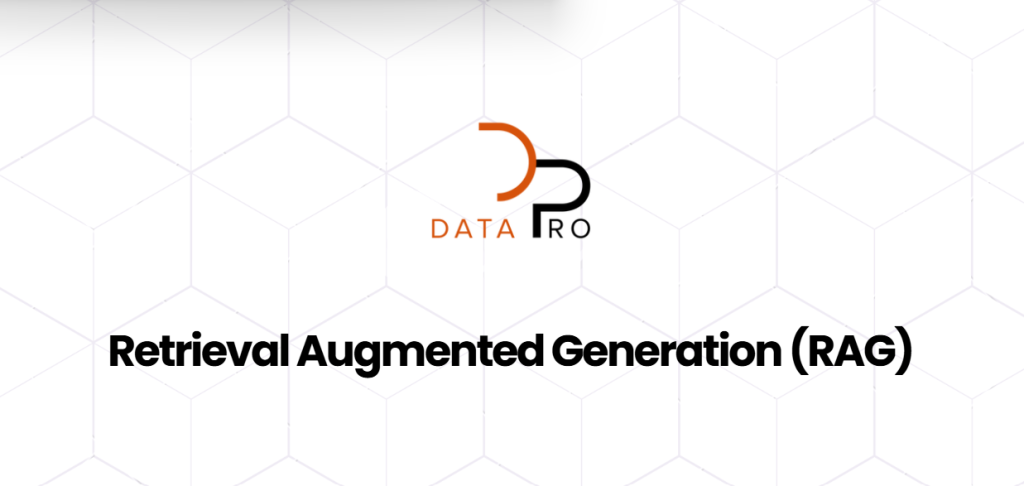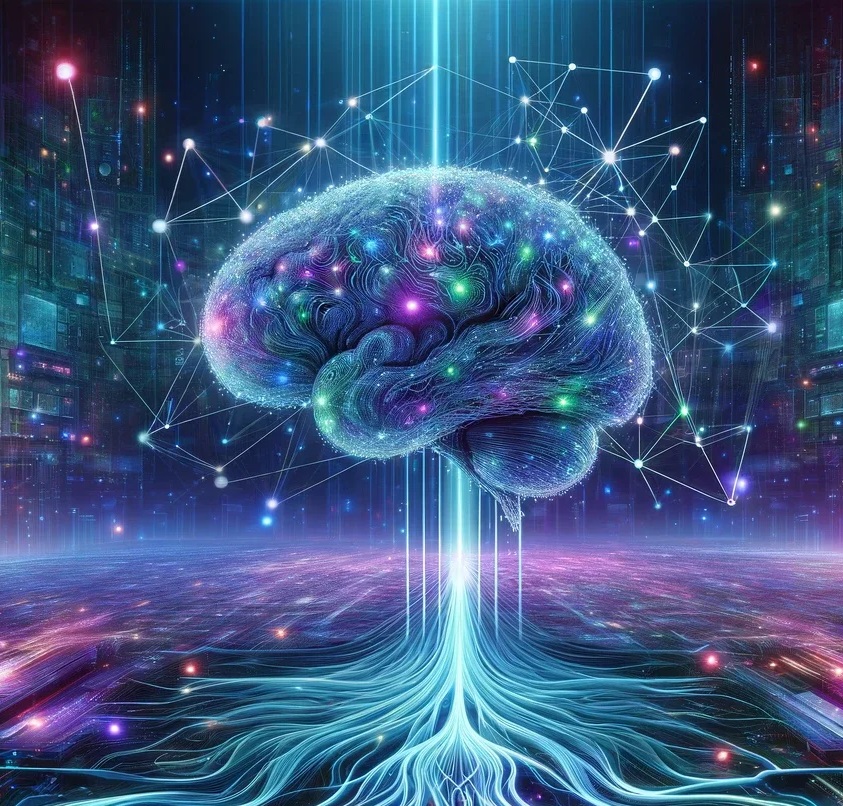
4 Ways Retrieval Augmented Generation (RAG) is Making a Splash
Retrieval-Augmented Generation (RAG) is a cutting-edge approach to generating natural language. It combines retrieval methods with generative models to create high-quality, informative text. While RAG is impressive, it’s not a one-size-fits-all solution. This article explores four areas where RAG truly shines: factual accuracy, reducing hallucinations, domain-specific applications, and offering transparency.

Demanding Accuracy
As AI becomes more integrated into various fields, concerns like compliance and liability arise. Here, RAG excels at generating factually correct and contextually consistent text. This makes it ideal for tasks like:
- News Summarization: Keeping up with current events can be overwhelming. AI can summarize news at a high level, but inaccurate information can lead to poor decisions. RAG ensures summaries are factually accurate.
- Scientific Reporting: Researchers are embracing AI for generating scientific reports. RAG allows researchers to focus on other aspects while producing concise, accurate summaries for colleagues.
- Medical Information Summarization: For patients with complex medical histories, RAG helps physicians navigate patient flow with up-to-date information.
- Legal Document Summarization: Similar to scientific reports, legal documents are often lengthy and complex. RAG can condense legal documents referencing vast amounts of laws and precedents into understandable summaries.
- Financial Reporting: The financial world is data-heavy. RAG applications can sift through massive datasets to produce concise, accurate reports in a fraction of the time it takes a human.
Combating Hallucinations
A common problem with traditional NLG models is “hallucination,” where the model generates text not supported by the input data. RAG mitigates hallucinations by grounding the generation process in real-world evidence. It retrieves relevant documents from a large corpus to inform generation, significantly reducing the likelihood of hallucinations.
Tailored for Specific Domains
RAG can be fine-tuned to specific domains, allowing it to generate text tailored to those domains’ requirements. This is particularly valuable for industries looking to leverage AI specific to their field. RAG allows models like ChatGPT, Llama, and Gemini to specialize in a particular domain, improving text quality and reducing hallucinations for domain-specific topics.
Transparency and Explainability
Unlike many NLG models, RAG is relatively transparent and explainable. You can understand how the model generates text and identify the sources of its information. This allows for easier debugging and ensures the model produces accurate and reliable text.
Conclusion
RAG is a powerful and versatile NLG technique with a wide range of applications. Its ability to ensure factual accuracy, mitigate hallucinations, be transparent, and specialize in domains makes it a valuable tool for many tasks.
Intelligent Assessment Automation for Scalable, Personalized Learning
A leading e-learning provider specializing in professional development and technical education was facing a fundamental challenge: scaling assessment and feedback systems to match the growing diversity and volume of learners across its platform. As the number of courses and enrolled users increased exponentially, the manual grading process became a bottleneck, delaying feedback, limiting instructor capacity, and ultimately reducing learner engagement and satisfaction.
The organization partnered with DataPro to introduce an end-to-end AI-powered assessment and feedback solution designed to enhance personalization, accelerate learning outcomes, and significantly reduce the burden on human evaluators.
Key Challenges Identified
- Manual Bottlenecks: Instructors and graders were manually reviewing thousands of assignments, leading to multi-day feedback cycles.
- Generic Feedback: Learners received templated feedback that lacked contextual relevance, slowing down their understanding and skill acquisition.
- Low Engagement Signals: Delayed feedback and lack of clarity contributed to high abandonment rates in mid-course modules.
- Instructor Burnout: Academic staff struggled to balance feedback quality with scale, creating inconsistencies in learner experience.
No Predictive Insight: There was no mechanism to anticipate learner drop-off or performance plateaus.
The DataPro Approach: Intelligent Assessment Ecosystem
1. AI-Based Auto-Grading System (LLM Integration)
At the core of the solution was an LLM-driven grading engine fine-tuned on domain-specific corpora (e.g., medical, engineering, business terminology) and integrated into the platform’s backend using Python and Symfony.
- Short-form and essay-style answers were parsed, evaluated, and scored in under 2 seconds.
- Custom rubrics were encoded to reflect course-specific requirements and ensure accurate, bias-minimized scoring.
- The model was continuously retrained using anonymized instructor feedback to improve accuracy and alignment.
2. Contextual Feedback Generator
Using generative AI, the system not only scored responses but also delivered explainable feedback, tailored to the learner’s individual response.
- Leveraged transformer-based models to break down errors, suggest improvements, and provide related learning materials.
- Provided inline feedback on grammar, argument structure, and subject-matter alignment.
- Generated positive reinforcement messaging that adapted tone and difficulty based on learner level and past interactions.
3. Real-Time AI Tutor (RAG-Based ChatBot)
An AI chatbot was deployed using Retrieval-Augmented Generation (RAG) architecture with a vectorized content database.
- Integrated directly with course material and custom embeddings from a PostgreSQL-backed vector DB.
- Learners could ask context-sensitive questions about assessment results and receive accurate, citation-backed answers.
- Functioned 24/7 across multiple languages and time zones to serve global learners without human latency.
4. Predictive Learning Analytics
Machine learning algorithms were implemented to monitor engagement signals (video watches, quiz results, time on task) and predict potential learner drop-off.
- Instructors and admins received weekly dashboards with dropout risk assessments and intervention suggestions.
The system dynamically recommended remedial content and alternate learning paths based on learner trajectories.
Outcomes & Measurable Impact
The integration of this intelligent assessment framework delivered transformative results within six months of deployment:
Metric | Pre-AI Implementation | Post-AI Implementation |
Average Feedback Turnaround | 72 hours | < 5 seconds |
Instructor Time on Grading | 40+ hrs/week | < 10 hrs/week |
Course Completion Rate | 58% | 81% |
Learner Satisfaction Score | 6.2/10 | 9.1/10 |
Average Score Improvement (Post-Assessment) | +8% | +19% |
- Scalable Feedback: The platform successfully scaled to support over 50,000 learners with no additional grading staff.
- Consistency & Fairness: Auto-grading removed subjective biases, ensuring standardized evaluation across global learners.
- Faster Learning Loops: Real-time, constructive feedback helped learners iterate faster and master complex topics.
- Actionable Insights: Predictive analytics gave course managers the tools to act early and support at-risk learners.
- Global Accessibility: The chatbot offered on-demand guidance, bridging instructor gaps in low-access regions.
Strategic Takeaway
This use case exemplifies how AI, when applied with strategic rigor and pedagogical alignment, can dramatically elevate the scalability and personalization of digital learning. By turning assessments from a static checkpoint into an interactive, intelligent process, the platform not only enhanced learner outcomes but also empowered educators to focus on higher-value instructional tasks.
With a growing focus on outcome-based education, intelligent assessment systems like these will play a critical role in the next generation of e-learning platforms.